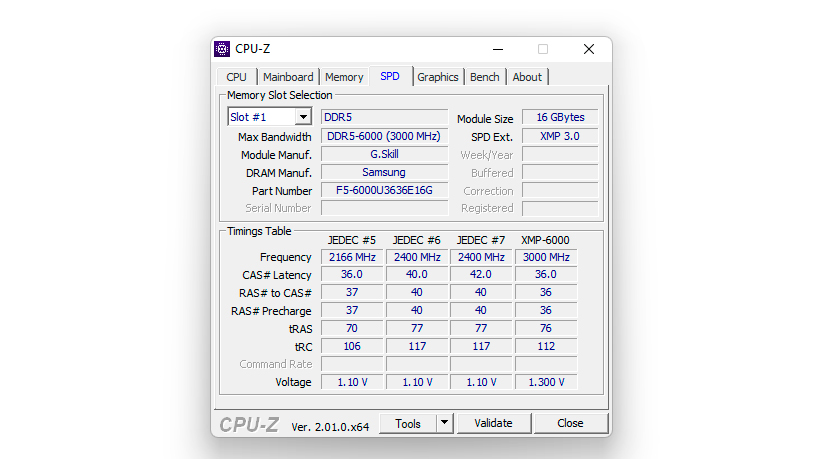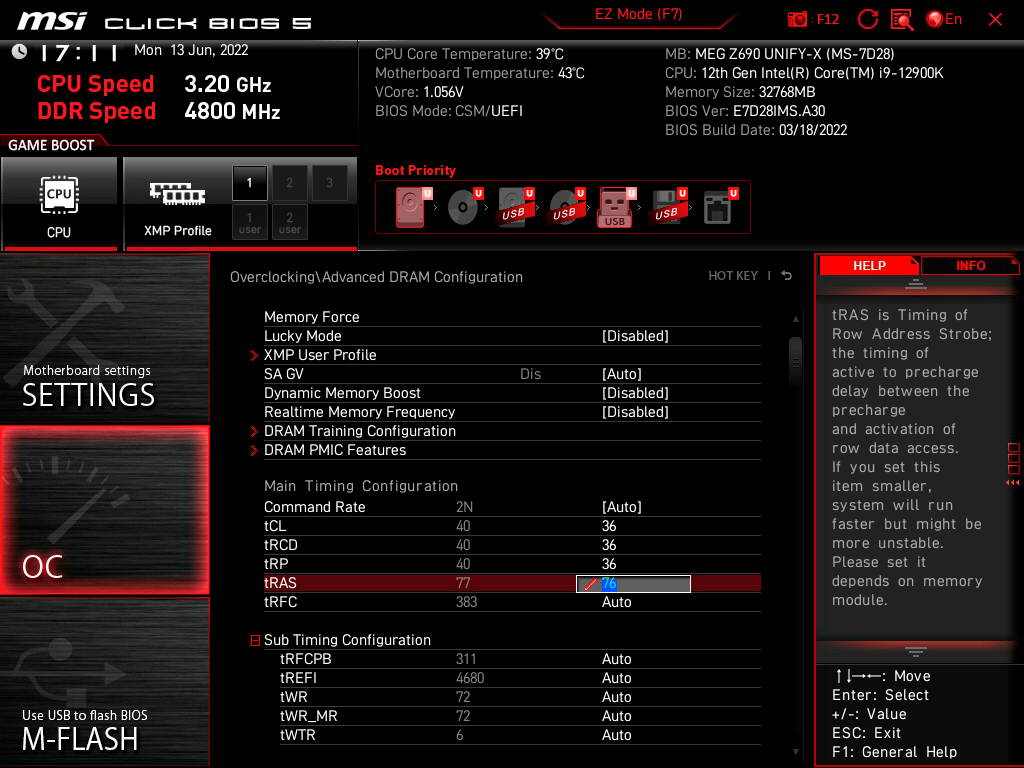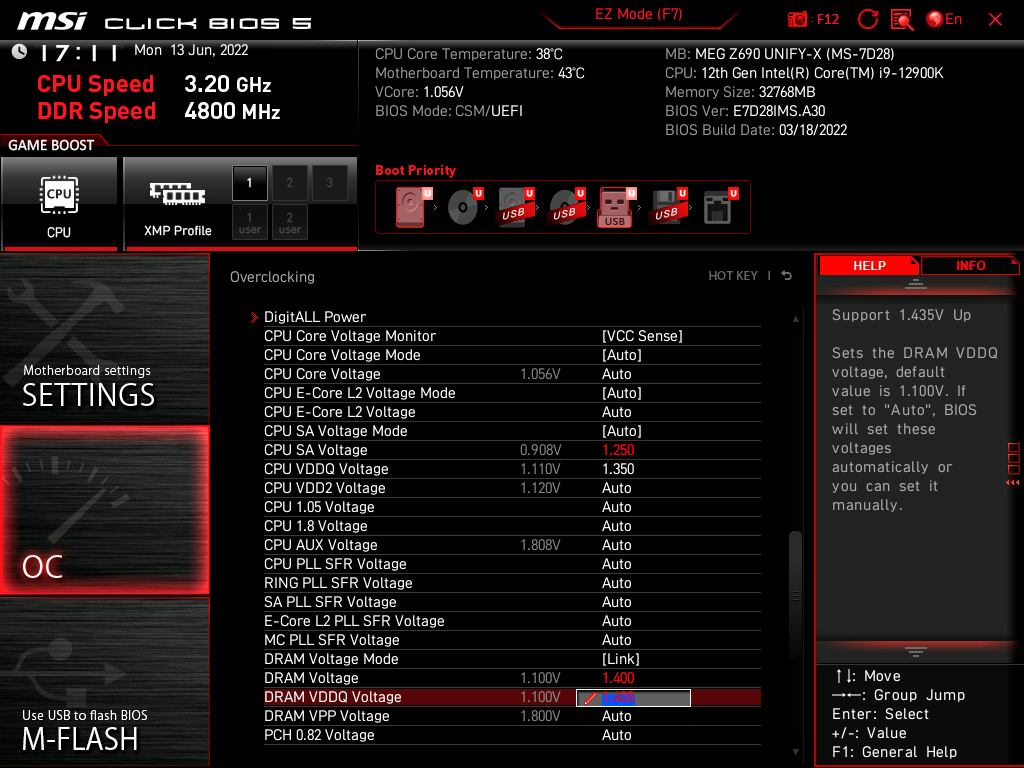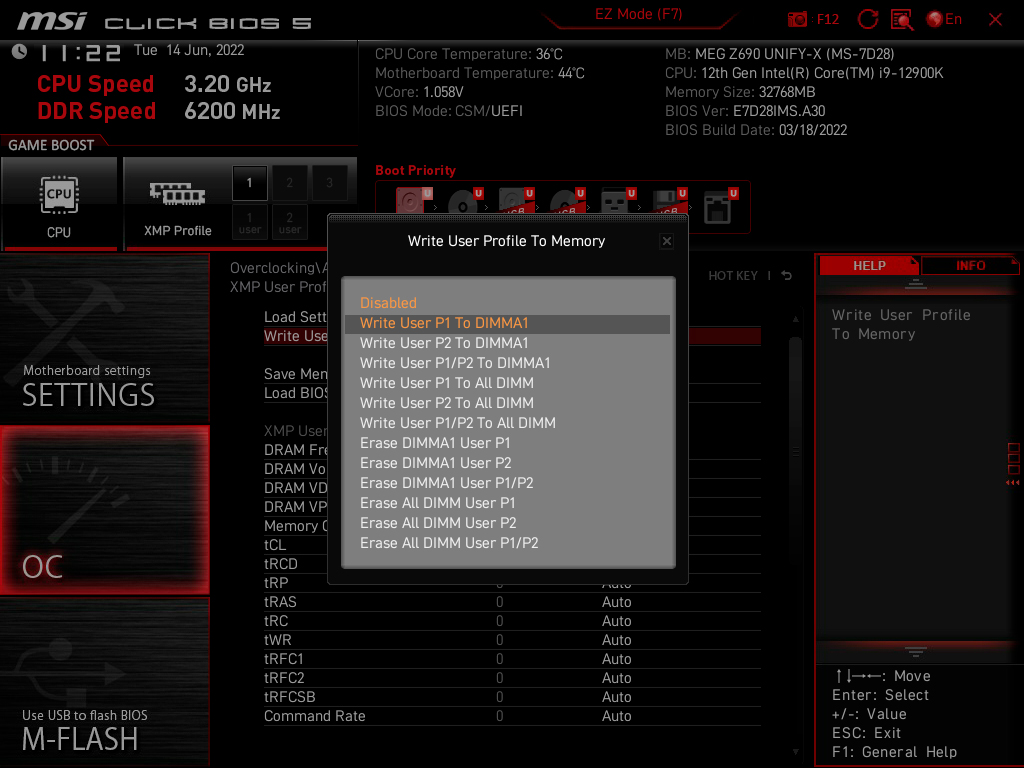Overclocking is an art that has existed throughout the history of the PC — who wouldn’t want to extract additional performance from a piece of hardware they've already purchased? Overclocking your CPU or graphics card usually gets all the attention because of the significant performance gains you get from overclocking. However, memory overclocking can also produce noticeable benefits if you’re willing to put in the work.
DDR5 brought many exciting improvements over DDR4, including performance, bandwidth, and capacity uplifts, when it debuted with Intel's Alder Lake. As you'd imagine, the next-gen chips, like Raptor Lake and AMD's Ryzen 7000, will also support the new memory, so you'll see plenty of new options on the market soon.
The only caveat is that DDR5 is in the early stages of its life cycle, so it isn’t entirely on the same level as high-performance DDR4 memory. That makes sense since DDR4 has been out for a while now. However, that doesn’t mean we can’t overclock DDR5 to squeeze more performance out of a memory kit. There’s always a risk when running hardware outside the manufacturer’s specifications, and product warranties don’t cover overclocking, either. However, overclocking doesn’t impact your hardware’s well-being if done correctly and within reasonable limits.
Many enthusiasts and casual users alike will simply use their memory kits' in-built XMP profile, which is an automated method of overclocking memory. If you're interested in using that technique, head to our How to Enable XMP article. If you're looking to extract even more performance, here's our guide to wringing the utmost performance out of your DDR5 memory kit.
Know Your DDR5 ICs
Different integrated circuits (ICs) behave differently, and it’s the same situation for DDR5. While some ICs may be more prominent to hit higher frequencies, others are better when aiming for low timings. The big manufacturers, including Micron, Samsung, and SK Hynix, have released their initial ICs for DDR5. However, DDR5 is still wet behind the ears, so we don’t have a wide selection of ICs.
No two ICs are the same, even if they’re from the same brand and product lineup. So, for example, even if a certain “X” IC can overclock beyond DDR5-6000, that doesn’t mean that all “X” ICs have the potential to do so. So, ultimately, there is still a little silicon lottery involved.
Thaiphoon Burner was a great utility to read the SPD on DDR4 memory modules to discover which ICs they carry without taking the heat spreader apart. Unfortunately, due to the lack of documentation from JEDEC, the developer behind Thaiphoon Burner hasn’t been able to add support for DDR5.
Luckily, CPU-Z can pick up the IC vendor on DDR5 memory modules even if it cannot pinpoint the exact IC model. For the moment, the feature is helpful since there aren’t a lot of ICs from the same company. However, once manufacturers have more than one IC on the market, CPU-Z won’t be any help at all unless the developer finds some way to detect the specific ICs.
Get Tom's Hardware's best news and in-depth reviews, straight to your inbox.
| IC Vendor | IC Part Number | Die Revision |
|---|---|---|
| Micron | MT60B2G8HB-48B, MT60B1G16HC-48B | A-die |
| Samsung | K4RAH086VB-BCQK | B-die |
| SK hynix | H5CG48MEBDX014, H5CG46MEBDX015 | M-die |
| SK hynix | H5CG48AGBDX018 | A-die |
In the DDR4 days, Samsung B-die ICs were the golden standard for tight timings. With DDR5, we find that SK hynix M-die can run similar timings to B-die. Based on our experience with different DDR5 memory kits, SK hynix's M-die ICs have the highest overclocking potential. For example, we've been able to get M-die as high as DDR5-6600, equally overclock a DDR5-4800 M-die memory kit, and find stability at DDR5-6000.
Again, we have to emphasize that these are just our preliminary observations with the current generation of ICs. The situation could change as time goes by and the ICs mature, or new ICs hit the market. But, at least for now, we rank the ICs in this order for overclocking: SK hynix M-die, Samsung B-die, and Micron A-die.
When overclocking memory, we first try to determine the maximum safe voltage we can use for the different ICs. Samsung told us that the company does not guarantee an overclocking voltage for its ICs, but the absolute maximum DC of the drain voltage is 1.4V. We've contacted SK hynix and Micron representatives to inquire about their respective ICs. Sadly, we haven't received any feedback on the matter. Nonetheless, we've spoken with various memory vendors, and the consensus is that 1.4V is the maximum voltage for daily usage.
Overclocking Process
1. Set your DRAM target data rate. The first step is determining how far you want to push your DDR5 memory. There are two approaches: You can choose a high data rate and work down from there, or you can pick a more modest data rate and work up to find the ceiling for your memory kit.
For reference, the default ratio for DDR5 is 100:100. Nonetheless, specific data rates are only available with the 100:133 ratio, such as DDR5-5333 or DDR5-6666.
Like Rocket Lake, Alder Lake also offers the two BCLK/DRAM ratios: 100:100 and 100:133. With Rocket Lake, the 100:133 ratio performs better. However, on Alder Lake, the 100:100 ratio offers similar performance.
Alder Lake has three gear modes for memory, but Gear 2 is the only setting that really matters for enthusiast-level DDR5 overclocking. The memory and memory controller run at the same frequency in Gear 1(1:1), while Gear 2 lets the memory operate twice as fast as the memory controller (2:1). Finally, Gear 4 runs the memory four times faster than the memory controller (4:1).
Gear 1 doesn't work with DDR5 as the default configuration is Gear 2, and Gear 4 won't come into play until you probably hit data rates as high as DDR5-8000 and above. As such, you should only use Gear 2 for the majority of DDR5 memory overclocking, though extreme overclockers using liquid nitrogen might need to step up to Gear 4.
2. Tweak memory timings. This step is the trial-and-error part of the overclocking process and can be time-consuming. DDR5 has the same four primary memory timings (CAS Latency, tRCD, tRP, and tRAS) as DDR4. The trick is to use baby steps, increasing the individual timings by one or two clock cycle increments and then testing for stability.
We recommend you start with your memory kit's advertised timings and go from there. If your overclock is unstable, add one clock cycle to the timings. If it's stable, you can try reducing one clock cycle on the timings to optimize your overclock.
You can also try playing with the command rate if you're feeling adventurous. For DDR5, the default command rate is 2T; however, 1T is possible depending on the IC. We've been able to get Samsung and SK hynix ICs to run at 1T but didn't have much luck with Micron ICs.
Memory overclocking is more than just playing with the four primary timings: You can get significant performance gains from tweaking secondary and even tertiary timings. However, that's beyond the scope of this article, so we won't go down that rabbit hole.
3. Increase voltages. There are quite a few voltage settings that have an impact on memory overclocking, but the average user can get by with tweaking four of them. You can leave the other voltages at the discretion of your motherboard.
DRAM VDD: This voltage is one of the most critical as it powers the memory chips. For everyday use, we recommend keeping it below 1.4V for safe measure.
DRAM VDDQ: The voltage feeds the memory chip's I/O. VDD and VDDQ typically go hand-in-hand. However, in some cases, desynchronizing the voltages and running a higher VDDQ (50 mV - 100 mV) can help stabilize memory overclocks.
CPU VDDQ: The voltage that goes to the processor's memory controller. 1.2V is sufficient for DDR5-4800 to DDR5-6000, whereas 1.4V should be high enough for DDR5-6200 and beyond.
VCCSA: This is the voltage for the system agent but helps for memory overclocks. It's one of the more sensitive voltages, so use small increments. For example, 1.25V to 1.35V is sufficient for most memory overclocks. It's best to keep VCCSA under 1.4V.
4. Test overclock stability. While some users run stress tests for a few hours, others run them overnight. You have to decide just how important memory stability is for your system and how much time you're willing to invest in testing. In addition, different programs use different algorithms for catching errors. Instead of relying on a single program, we recommend you use a combination of two or more to test for stability.
At any rate, don't get too fixated on punishing your DDR5 memory. Once you're satisfied with your overclock, daily usage is ultimately the best stability test.
5. Save your overclock. Back in the old days, you either have to memorize your memory overclock settings or jot them down on a piece of paper. DDR5 arrives with the new XMP 3.0 standard, pushing the total number of memory profiles to five. Two of these profiles are available to the user, so we recommend using them. Once you've found your stable memory overclock, don't forget to save it to your DDR5 memory module. The option varies per motherboard, but you can usually find the feature in the DRAM section.
Stability Testing Software
There are many options for testing memory overclocks, but we've compiled a small list of the most prevalent and practical tools. Many of them are free, but some require a license.
- Memtest86: This old-school software for testing memory is still one of the best options. The program will boot off a USB pen drive to test your overclock's stability without entering Windows.
- HCI MemTest: The software picks up memory errors pretty quickly. The optimal way is to open one instance per CPU thread and divide the memory into equal parts for testing.
- Google Stressful Application Test (GSAT): If you're a Linux person, there's no better utility for memory testing than GSAT. Google uses this software to test its machines.
- Karhu RAM Test: The software is good at what it does and supports up to 8TB of memory. Sadly, it's not free and requires a $10 license.
- TestMem 5: This lightweight and solid piece of software supports custom configurations. The Anta777 Extreme and Absolut configurations are currently the most popular and widely used presets.
Optimized DRAM Timings
There are no shortcuts to hitting your maximum memory overclock. Nonetheless, we've put together a small table with possible optimized configurations on existing DDR5 memory kits. These aren't magic formulas that you can plug into your motherboard without testing, though — remember that every memory kit is different regardless if they have the same IC. However, these basic configurations can serve as a stepping stone for you, and you can go from there. Don't be afraid to try other combinations.
We stuck to the more standard data rates you can find on the market, like DDR5-4800, DDR5-5200, etc. However, you can also experiment with other uncommon data rates, like DDR5-5066.
| Data Rate | Timings | Voltage |
|---|---|---|
| DDR5-6400 | 40-40-40-90, 42-42-42-90, 44-44-44-90 | 1.35V - 1.40V |
| DDR5-6200 | 32-38-38-77, 36-36-36-77, 36-38-38-77 | 1.35V - 1.40V |
| DDR5-6000 | 36-36-36-77, 36-38-38-77, 38-38-38-77 | 1.35V - 1.40V |
| DDR5-5600 | 36-36-36-77, 36-38-38-77, 38-38-38-77 | 1.30V - 1.35V |
| DDR5-5200 | 36-36-36-77, 36-38-38-77, 38-38-38-77 | 1.20V - 1.30V |
| DDR5-4800 | 34-36-36-77, 36-36-36-77, 36-38-38-77 | 1.10V - 1.20V |

Zhiye Liu is a news editor, memory reviewer, and SSD tester at Tom’s Hardware. Although he loves everything that’s hardware, he has a soft spot for CPUs, GPUs, and RAM.
-
wifiburger I wouldn't trust any of the list for stability testing you included.Reply
I would do 1h max of hci-memtest to make sure it's not supper unstable and move to
y-cruncher all core , cycle all stress test; will hit memory / memory controller very hard.
Anything else is a waste of time.
you can pass prime95 large, hci-memtest for weeks non-stop and crash/reboot on y-cruncher or your game in 5mins with memory oc -
puffin_time I have a kit of Hynix rated at 6000 CL36, would it be feasible or worthwhile to try for 6400? And if so should I work off of the XMP timings as a starting point?Reply





